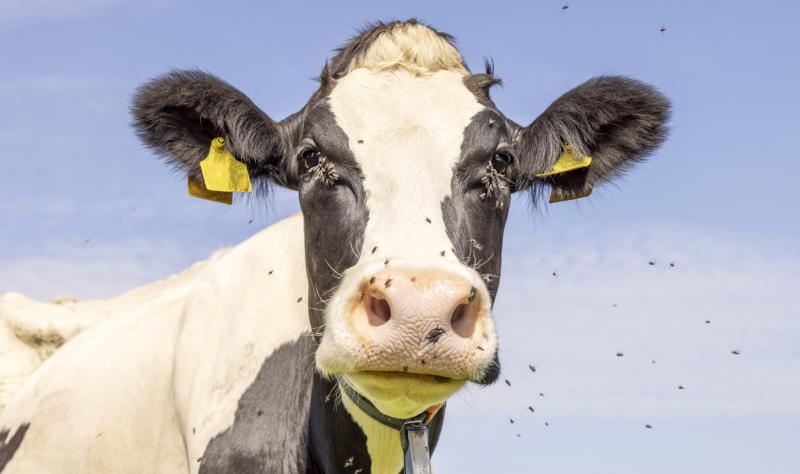Though H5N1 avian flu outbreaks in dairy cattle and commercial poultry are at low levels in the United States, scientists continue to sort out how the virus spreads on farms, and two new pieces of information this week shed more light on potential spread in dairy cattle: contamination from house flies and “milk snatching”.
Over the last 30 days, the US Department of Agriculture (USDA) has reported only one detection in poultry, a game bird farm in Pennsylvania, and two detections in dairy cattle, which involved herds from California and Arizona.
The decline in US detections appears to be part of a largely seasonal drop in cases. A new monthly update from the World Organization for Animal Health (WOAH), which covers activity in June, said though poultry outbreaks have decreased, with only 15 reported for the month, new outbreaks in wild birds are on the rise, especially in Europe.
In the early days of H5N1 outbreaks in dairy cattle, movement of infected cattle and contaminated equipment were thought to play major roles in the spread of the virus. However, outbreaks continued to occur, despite curbs on moving dairy cows among states and stepped-up biosecurity measures on farms, raising ongoing questions and intense scientific investigations into other contributing factors.
Fly sequence stirs new buzz
Earlier this week, Raj Rajnarayanan, MSc, PhD, a computational biologist with the New York Institute of Technology College of Osteopathic Medicine at Arkansas State University, noticed that H5N1 sequence samples from a house fly from California in October had been recently uploaded to GISAID, the Global Initiative on Sharing All Influenza Data, and posted his observations on X. Like the virus spreading in cattle, the virus belonged to the B3.13 subtype of the 2.3.4.4b clade.
“Detection of avian influenza in house flies shows these insects can mechanically move virus around farms,” Rajnarayanan wrote in a follow-up post. “No evidence they spread H5N1 to people or animals but it’s another reason to step up farm biosecurity!”
Mike Coston, a former paramedic who has been chronicling avian flu scientific developments for decades on his news blog Avian Flu Diary, in a post yesterday referenced a report from as far back as 2006 from Japan that showed blow flies found in the vicinity of a poultry outbreak could carry the virus and spread it by their feet or body following contact with infected material.
“While we’re not talking about classically ‘infected‘ flies, it seems likely that contaminated flies may be one of many contributors to the spread of the HPAI [highly pathogenic avian influenza] virus,” he wrote, also pointing to a more recent preprint study that suggested blowflies at a Japanese crane colony could acquire the virus from dead birds or from fecal material of infected birds.
Coston also noted that peridomestic animals such as rodents and “poultry dust” have been suggested as other contributors. “Unless and until we get a better handle on how HPAI is spreading in the wild—and among and between farms—our ability to slow or contain these outbreaks will remain limited.”
‘Milk snatching’ among routes of cow mammary gland infection
In other developments, a Chinese research team that studied experimental infections involving different inoculation routes and resulting transmission in dairy cattle found that mouth-to-teat transmission may be how the H5N1 virus initially infects mammary glands. The team published its findings earlier this month in National Science Review.
They found that virus delivered through the nose only replicates in the mouth and respiratory tracts of dairy cattle, but inoculation into the mammary gland replicates only in that mammary gland, suggesting that entry through the teat is the only way the virus can naturally infect mammary glands.
Because some lactating cows “steal milk” through self-nursing or mutual nursing, mouth-to-teat transmission may be the route by which H5N1 initially infects the mammary glands, the team wrote. Calves were also able to transmit the virus through nursing. Investigators noted that bovine oral tissues contain high levels of sialic acid receptors, which may facilitate viral infections through contaminated feed and water and efficient replication that can last for several days.
In other experiments, researchers tested two vaccines in lactating cattle, H5 inactivated vaccine and hemagglutinin-based DNA vaccine. They found that both conferred complete protection against H5N1, even after high-dose virus challenge through direct mammary gland inoculation.
